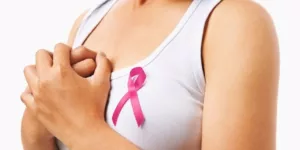Now that the use of marijuana for medicinal purposes is becoming lawful in many more states and territories around the world, particularly in the US and Canada, everybody is suddenly sitting up and taking notice of how it can help in the treatment of various ailments, diseases, and conditions.
One of the most interesting uses of marijuana, or cannabis, is in the use of it for treatment of cancer.
This article takes a look at the use of marijuana for treating breast cancer, and evaluating the statement that marijuana cures breast cancer: could it possibly be true?
Tip 1: Know that medical marijuana and breast cancer research is in its initial stages
Unfortunately, there has been not much validated and published scientific research into marijuana treatment for cancer. The fact that marijuana has been a schedule I drug in many places around the world means that there has been little reason to conduct in depth research into the subject, as the drug has been an illegal substance.The studies done so far have been limited to petri-dish type situations and testing on mice. However, this is changing as we see the effects of loosening of laws and more studies being done on the topic.
Tip 2: Determine your type of breast cancer before treatment
The tumors that develop in breast cancers are not all the same. The types of breast cancer include, but are by no means limited to:Paget’s Disease of the Nipple, varieties of Invasive Ductal Carcinoma, Lobular Carcinoma in Situ, Inflammatory Breast Cancer, Ductal Carcinoma in Situ, and more. It is essential that you understand exactly which form of breast cancer you have prior to considering medical marijuana treatments.
Tip 3: Learn the difference between ER, PR, and HER2 and negative and positive
ER positive cancers may grow with estrogen, whereas PR positive cancers may grow with progesterone. For these hormone positive cells, they may respond to hormonal treatment. HER2 positive tumors indicate faster tumor growth, whereas HER2 (human epidermal growth factor receptor 2) negative indicates this is not the case. Ki-67 is a protein marker that is indicative of faster tumor growth.
Each type of breast cancer has a molecular subtype that is one of the following:
· Luminal A, where the cancer has estrogen (ER) and/or progesterone (PR) positive receptors, and HER2 negative. There are also low levels of Ki-67, another marker for cancer growth speed.
· Luminal B, where the cancer is ER and/or PR positive, and HER2 positive or negative. There are high levels of Ki-67.
· Triple negative, where the cancer is ER, PR, and HER2 negative.
· HER2 enriched, where the cancer is ER and PR negative, but HER2 positive.
Tip 4: Understand the link between cannabinoid receptors and breast cancer
Much like the cells in our breasts have ER and PR hormone receptors, they also have cannabinoid receptors, too – CB1 and CB2. While our bodies produce endocannabinoids themselves, they can also be activated with natural or synthetic cannabinoids, also.
It is now being discovered that activating these receptors within the cancerous breast cells, with the aid of natural or synthetic cannabinoids, can help to reverse tumor growth.
Current research suggests that the types of cancers that are most aided by the use of cannabinoids are HER2 positive cancers, followed by PR positive and triple negative cancers. It is important to determine the exact type of cancer that is present to avoid making the situation worse.
Tip 5: Learn which treatments and levels are necessary for your type of breast cancer
Treatment with THC (Tetrahydrocannabinol, the main psychoactive ingredient in marijuana) and CBD (Cannabidiol, another ingredient of the plant), can have different levels in different strains of plants. For those with HER2+, PR+, or triple negative cancers, it is generally recommended a 4 parts THC to 1 part CBD strain.
For those with ER+ cancers it appears is important not to have too high ratios of THC, and it seems a 1 part THC to 1 part, or 3 part CBD level is better.
Tip 5: Be aware of the risk of self-administration with marijuana and breast cancer
While there is now evidence to suggest that the use of cannabinoids can help in shrinking the size of cancerous breast tumors, this is still in the early stages of scientific studies, and there have been no clinical trials of administering cannabinols on women with breast cancer.
Tip 6: Research your breast cancer and cannabis interactions thoroughly
Those already living with breast cancer may be keen to try using cannabinols at home to avoid expensive and unnatural treatments, however it is extremely important to first understand the type of breast cancer that you have, as well as go through the scientific studies to see if there are other biological markers present in your body that may make your tumors worse with cannabinol treatment – trying a Google Scholar search for “cannabinol breast cancer” may help with this.
Tip 7: Find a doctor to help
When you have done your research, you should track down a doctor that specializes in breast cancer treatment with marijuana for the best possible advice on the matter. This way you can look to treat your breast cancer with this revolutionary treatment in the safest way possible.








